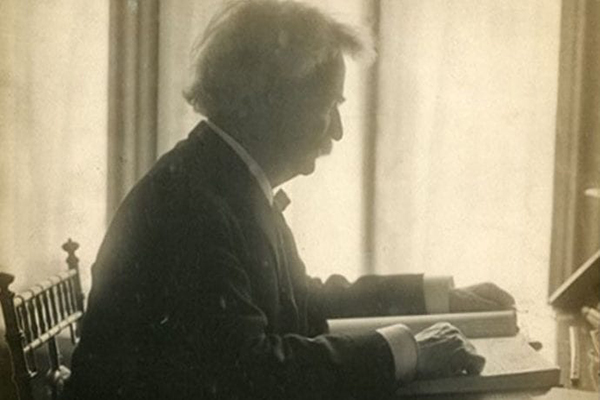
By Christopher White, National Correspondent
NEW YORK — In 1867, American humorist Mark Twain traveled to the Holy Land on a memorable voyage that deepened his appreciation for the Bible, yet left him with cynical views on the sites he visited along the way.
A new exhibit at the New York Historical Society, “Mark Twain and the Holy Land,” chronicles that bit of history. It’s timed to coincide with the 150-year anniversary of Twain’s writings from the trip, “The Innocents Abroad” – which sold more copies than any of his other works during his lifetime.
Twain’s nearly half-year journey would take him – by boat, rail, horse, mule, and camel – through western Europe, Egypt, Syria, Lebanon, and Palestine, where he traveled with members of high society and sent letters back to a San Francisco newspaper, “Alta California,” that published his musings as travel dispatches before they were collected together for the book.
Exhibition curator Michael Ryan told The Tablet that what Twain did in that work, published two years after he returned to the United States, “was original and had not been done before.”
Ryan noted that Twain did not write as a literary historian, but used his “acerbic wit, sarcasm and, occasionally, awe,” to write not only about the sites, but also about the travelers and “how they saw things, how they interacted.”
According to Ryan, he also helped to “demythologize” the Holy Land from the “grandiose” and present it as it was then, which was “a place falling apart.”
In writing about Jerusalem, Twain describes it as “mournful, and dreary, and lifeless,” adding that “I would not desire to live here.”
In describing the Church of the Holy Sepulchre, the site where tradition holds Christ was buried, and which then as now was shared – begrudgingly – by Christians of six denominations, he wrote, “It has been proven conclusively that they cannot worship together around the grave of the Saviour of the World in peace.”
While visiting the Sea of Galilee, Twain was quick to point out that it is “no sea,” adding “the dim waters of this pool can not suggest the limpid brilliancy of Tahoe.”
“He takes away the veil and the mystique,” Ryan summarized to The Tablet.
The New York Historical Society’s exhibition showcases some of Twain’s original handwritten notes from his trip diaries, photographs, artwork, and other collectibles, including the olive wood covered Bible he purchased in Jerusalem for his mother – the woman responsible for his reverence for the scriptures, despite his lack of religiosity.
Ryan said Twain’s reverence for the Bible “goes deep” and was “a part of him,” in large part due to his devotion to his mother.
When Twain returned to New York following the trip, he originally wanted the book to be titled “The New Pilgrims’ Progress,” to capitalize off the success of John Bunyan’s bestseller. In the end, he kept it as a subtitle, turning the focus toward the innocence or naiveté of Americans making sense of a foreign land.
Beyond that, it catapulted Twain to international fame, selling 82,000 copies in the first 18 months and doubling that over the next decade, and set off a wave of high-profile visitors to the Holy Land, including President Ulysses Grant, Gen. William T. Sherman, and Theodore Roosevelt. Letters from their own voyages are also on hand for exhibition.
While much about the Holy Land has changed in the 150 years since its publication, perhaps one sign of the book’s enduring legacy is that when Israeli Prime Minister Benjamin Netanyahu traveled to Washington to meet with then newly-elected President Barack Obama in May 2009, he gifted him with a first edition copy of the book.
Visitors won’t find that copy on hand, but there are plenty of other small treasures tucked inside the exhibition – all on view until February 2, 2020.
